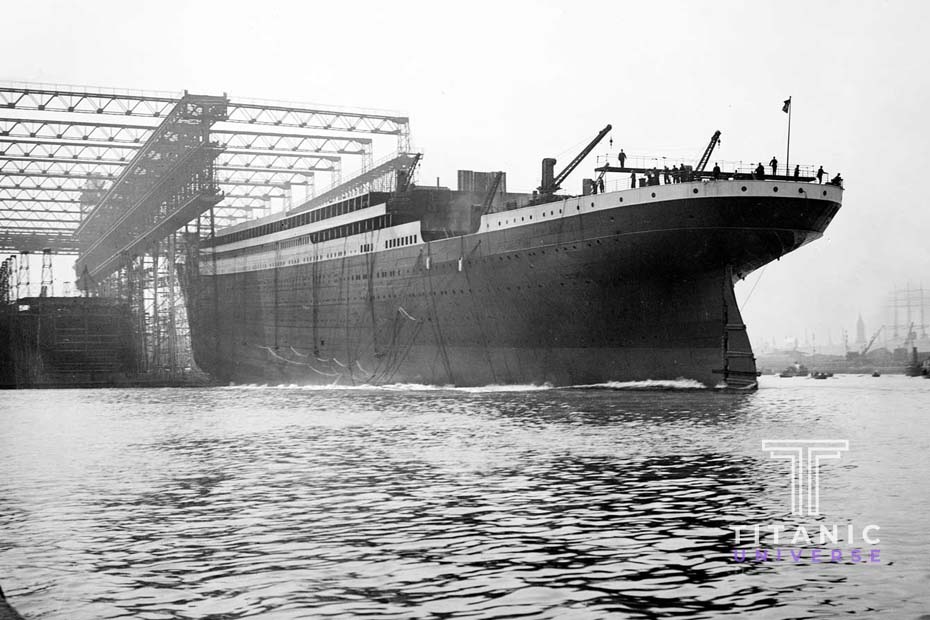The RMS Titanic was built by over 15,000 shipyard workers in Belfast employed by Harland and Wolff shipbuilders for White Star Lines. She was launched on the 31st of May 1911, some two years after her keel was first laid on the 31st of March 1909. A year after launch from her dry dock into the River Lagan, she was completed and left Belfast on the 2nd of April 1912, before setting off on her maiden voyage from the docks of White Star Line in Southampton on the 10th of April 1912.
Harland and Wolff
Harland and Wolff shipbuilders in Belfast built the Titanic for her owners, the White Star Line.Edward James Harland was a marine engineer who had served as an apprentice for iron-hulled shipbuilders Robert Stephenson and Company and began working for them as General Manager at their shipyard in Belfast in 1854. A few years afterward Harland bought the shipyard from his employers with investment from his personal assistant’s uncle. That personal assistant was none other than Gustav Wilhelm Wolff. In 1860 Wolff became a partner in the business and the famous Harland and Wolff Shipyard was born in 1861.
During the golden age of shipbuilding, around the turn of the 20th century, Harland and Wolff was the biggest shipyard in the world. To build the huge ships demanded during this time, they built large docks and slipways at the shipyard to cope as well as huge overhead cranes, including the 600-tonne Arrol Gantry that stood taller than Westminster Abbey until its demolition in 1960.
Harland and Wolff had a long-lasting relationship with Titanic’s owners, White Star Line, which began in 1870 with their first ship, Oceanic. Such was the relationship that the White Star Line would provide Harland and Wolff with a sketch of their idea and give them free rein to turn it into a design. Harland and Wolff would spend what they needed on the build and send the invoices to the White Star Line, plus a 5% profit margin.
In total, Harland and Wolff built over 70 vessels for the White Star Line in their 65 year relationship until 1934, when the White Star Line amalgamated with Cunard and all future contracts for shipbuilding went elsewhere. The last vessel built by Harland and Wolff for the White Star Line was the Georgic.
The Workers
Belfast became a thriving city in the early years of the 20th century, with a population of nearly 400,000 workers. Many were employed within either the booming shipbuilding or textile industries and many families and workers either moved to the city from the countryside or from other countries to take up the work. The workforce employed at Harland and Wolff’s Belfast shipyard grew from around 9,000, reaching around 15,000 in 1910.
The shipyard workers lived locally in the streets around with their families in the thousands of homes built by Harland and Wolff to accommodate their growing workforce. Working around 50 hours a week from 6 am until 5.30 pm, as well as Saturday mornings, they were paid around £2 per week. They were allowed two short breaks a day for breakfast and lunch, which had to be eaten alongside the ship as the company dining rooms were reserved for management. Workers at the Shipyard were allowed only 7 minutes a day to use the toilet.
There was plenty of work available. Titanic’s sister ship Olympic had her keel laid in the shipyard just three months before the Titanic’s was laid and the sister ships grew in their dry docks alongside each other, with work undertaken on both ships at the same time. In addition to being shipbuilders, Harland and Wolff manufactured much of the equipment needed to power the Titanic and the Olympic, such as engines and boilers, increasing the work available and the skills of the workers needed.
Much of the work done by the laborers was dangerous and involved working with steel – from welders to riveters, from platers to plumbers. Other work at the shipyard was less dangerous and more skilled, including the master craftsmen working with wood designing and making the cabinets and staircases for the Titanic.
The building of the Titanic started on the 31st of March 1909 when her keel was laid down. Just over 2 years, and the modern-day equivalent of around a hundred million pounds later, the 15,000 thousand strong workforce in Belfast put down their tools for her launch in 1911. It then took a further year’s hard work fitting out her interior and installing her engines, funnels, and superstructure before she finally left Harland and Wolff’s shipyard and headed to Southampton and her ill-fated maiden voyage.


